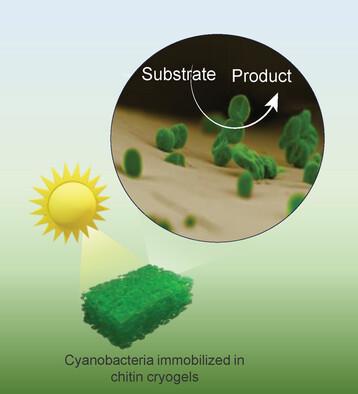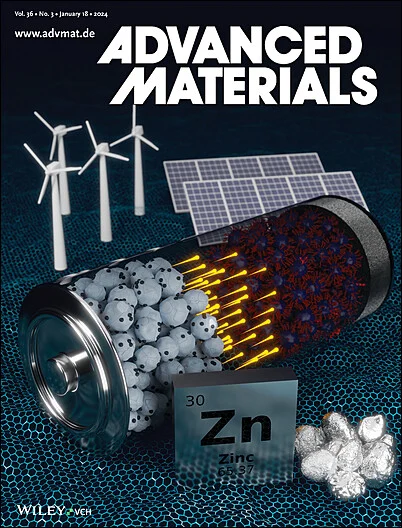Bioinspired Nanochitin-Based Porous Constructs for Light-Driven Whole-Cell Biotransformations
IF 27.4
1区 材料科学
Q1 CHEMISTRY, MULTIDISCIPLINARY
引用次数: 0
Abstract
Solid-state photosynthetic cell factories (SSPCFs) are a new production concept that leverages the innate photosynthetic abilities of microbes to drive the production of valuable chemicals. It addresses practical challenges such as high energy and water demand and improper light distribution associated with suspension-based culturing; however, these systems often face significant challenges related to mass transfer. The approach focuses on overcoming these limitations by carefully engineering the microstructure of the immobilization matrix through freeze-induced assembly of nanochitin building blocks. The use of nanochitins with optimized size distribution enabled the formation of macropores with lamellar spatial organization, which significantly improves light transmittance and distribution, crucial for maximizing the efficiency of photosynthetic reactions. The biomimetic crosslinking strategy, leveraging specific interactions between polyphosphate anions and primary amine groups featured on chitin fibers, produced mechanically robust and wet-resilient cryogels that maintained their functionality under operational conditions. Various model biotransformation reactions leading to value-added chemicals are performed in chitin-based matrix. It demonstrates superior or comparable performance to existing state-of-the-art matrices and suspension-based systems. The findings suggest that chitin-based cryogel approach holds significant promise for advancing the development of solid-state photosynthetic cell factories, offering a scalable solution to improve the efficiency and productivity of light-driven biotransformation.

求助全文
约1分钟内获得全文
求助全文
来源期刊

Advanced Materials
工程技术-材料科学:综合
CiteScore
43.00
自引率
4.10%
发文量
2182
审稿时长
2 months
期刊介绍:
Advanced Materials, one of the world's most prestigious journals and the foundation of the Advanced portfolio, is the home of choice for best-in-class materials science for more than 30 years. Following this fast-growing and interdisciplinary field, we are considering and publishing the most important discoveries on any and all materials from materials scientists, chemists, physicists, engineers as well as health and life scientists and bringing you the latest results and trends in modern materials-related research every week.
 求助内容:
求助内容: 应助结果提醒方式:
应助结果提醒方式:


